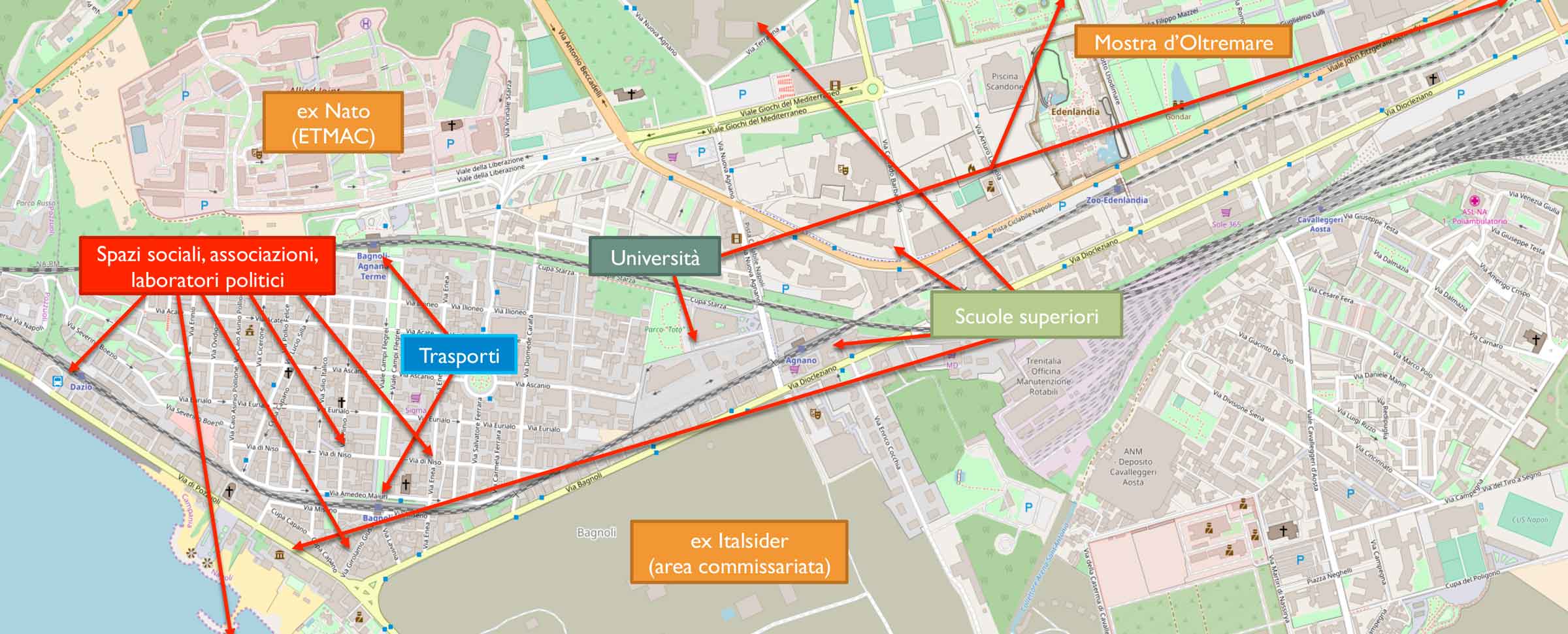Making Bagnoli a Laboratory for Change
Urban Regeneration as a Tool of Environmental Justice
The Context
Spilling over a ridge facing historic Mount Vesuvius and overlooking the Gulf of Naples, the famed Posillipo district hosts Napoli’s most well-to-do residents. Behind the ridge, however, lies Bagnoli, a community suffering the effects of decades of industrial pollution and governmental neglect. Though Bagnoli too lies along Italy's breathtaking Tyrrhenian coast, it is cut off from the sea by a heavily polluted, decommissioned industrial site and constrained by a former NATO base. These sites, which have bounced among industrialist landowners, the city of Napoli, and the Italian national government, have had numerous urban plans but little action. While debate continues to rage over the financing of the cleanup of the site, local activists have sought to articulate a vision of more equitable investment into Bagnoli's local economy and housing.
The Response
Adam worked with local citizen advocacy and environmental justice groups to brainstorm catalytic and transformational urban regeneration projects in and around Bagnoli. Zeroing in on the former NATO base as an underutilized but particularly promising urban asset, participants proposed recommissioning the disused campus buildings to accommodate a variety of community-oriented uses ranging from affordable housing, offices and maker spaces within reach of the fledgling startup community and local SMEs to cultural venues that host and support community-led art cooperatives. Innovative institutional anchors, including a proposed Museum of Arab-Italian Cultural Exchange and the headquarters of the new Institute for Exiled Arab Art provide a unique, reconciliatory twist on the history of the site while linking Bagnoli with world-class cultural institutions. Adam led a design charette outlining spatial visions for the site, as well as key pedestrian mobility and connectivity interventions to link the former base with Bagnoli's existing urban fabric, overcoming decades of spatial isolation and tripling the open and public space accessible to Bagnoli's residents.



